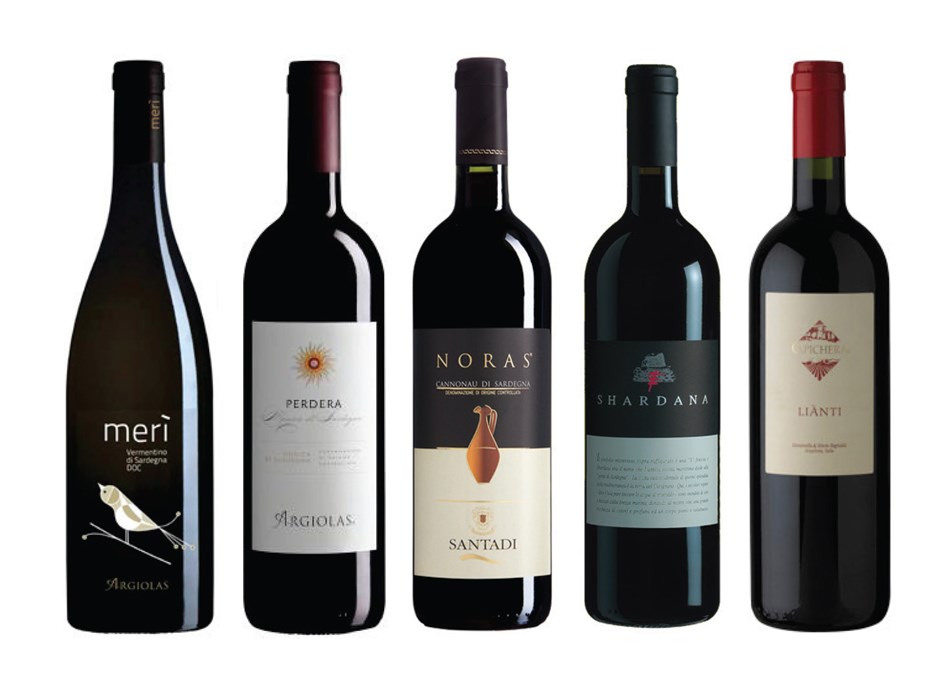My favourite place is usually wherever I am at any given moment. Right now, that’s Sardinia. I’m looking out over the clear blue Mediterranean Sea at one of the most beautiful beaches in the world eating freshly caught fish and sipping on Vermentino. The weather is hot and dry but a refreshing breeze keeps the heat bearable bringing with it the heady scent of wild herbs. In other words, it’s paradise.
Every region in Italy has its own unique identity but there’s something particularly distinct about Sardinia. Sitting 200km off the coast, it’s the most isolated. The locals consider themselves Sardinian rather than Italian. In fact, the second largest island in the Mediterranean, Sardinia is like a mini-continent unto itself. The landscape changes every few miles as do the dialect, traditional dress, cuisine and wine.
Sardinia is one of Italy’s richest regions in terms of native grapes. In the past, each corner of the island boasted its own specialty, from the poor deep sands in the southwest of Sulcis to the heat reflecting granite in the northeast of Gallura, by way of black volcanic rock, calcareous clay and a host of other soils. Obscure white varieties like Vernaccia di Oristano, Nasco and Nuragus as well as reds such as Bovale Sardo, Cagnulari and Nieddera are still linked to tiny limited areas. In many cases, passionate winemakers have come to their rescue, saving them from extinction. Examples of these can be difficult to find beyond Sardinia’s shores but they’re well worth seeking out.
Wines made from Vermentino (white) and Cannonau (red) are more widely available and have become Sardinia’s flagships. They cover the island from north to south but express themselves differently depending on where they grow. From whatever pocket they hail, both capture the fragrant Mediterranean brush and provide an evocative introduction to the island.
Sending you bright rays from sun-soaked Sardinia.
2015 Argiolas Meri • Vermentino di Sardegna DOC, Italy • $28-30, private wine stores
A new wine from the longstanding but constantly innovating Argiolas estate, Merì is made using techniques to reduce the use of sulphur. Vibrant, fresh and fruity, it transmits the herb-laden sea breeze.
2013 Argiolas Perdera • Monica di Sardegna DOC, Italy • $23-25, private wine stores
Sardinia grows its fair share of Monica, but this lovely mid-weight red takes a back seat to the better-known Cannonau and brawnier Carignano. Unpretentious and juicy with pretty dried flowers, red plum and spice, the Perdera is best enjoyed with a slight chill.
2012 Santadi Noras • Cannonau di Sardegna DOC, Italy • $30.49
The same grape as Grenache/Garnacha, Cannonau’s origins have been hotly debated. The Sardinians fiercely defend it as their own and could very well be right. Whatever the case may be, this grape takes on its own identity in Sardinia. Earthy, leathery notes meet dried black raspberry, myrtle and thyme.
2009 Santadi Shardana • Valli di Porto Pino IGT, Italy • $32.99
While likely of Spanish origin, Carignano made a home for itself in Sardinia many years ago. The sandy soils of Sulcis provide a precious source of old vines as found in this example. Ripe, concentrated and full with flavours of luscious black cherry and grilled rosemary.
2013 Capichera Liànti • Isola dei Nuraghi IGT, Italy • $35.99, BC Liquor Stores
Capichera is a top-notch producer in Gallura and just a stones through away from the stunning Costa Smeralda. While the area is known particularly for Vermentino, Capichera’s reds are equally impressive. Here again, Carignano dominates and provides a delicious tangle of fennel, licorice and blackberry.



